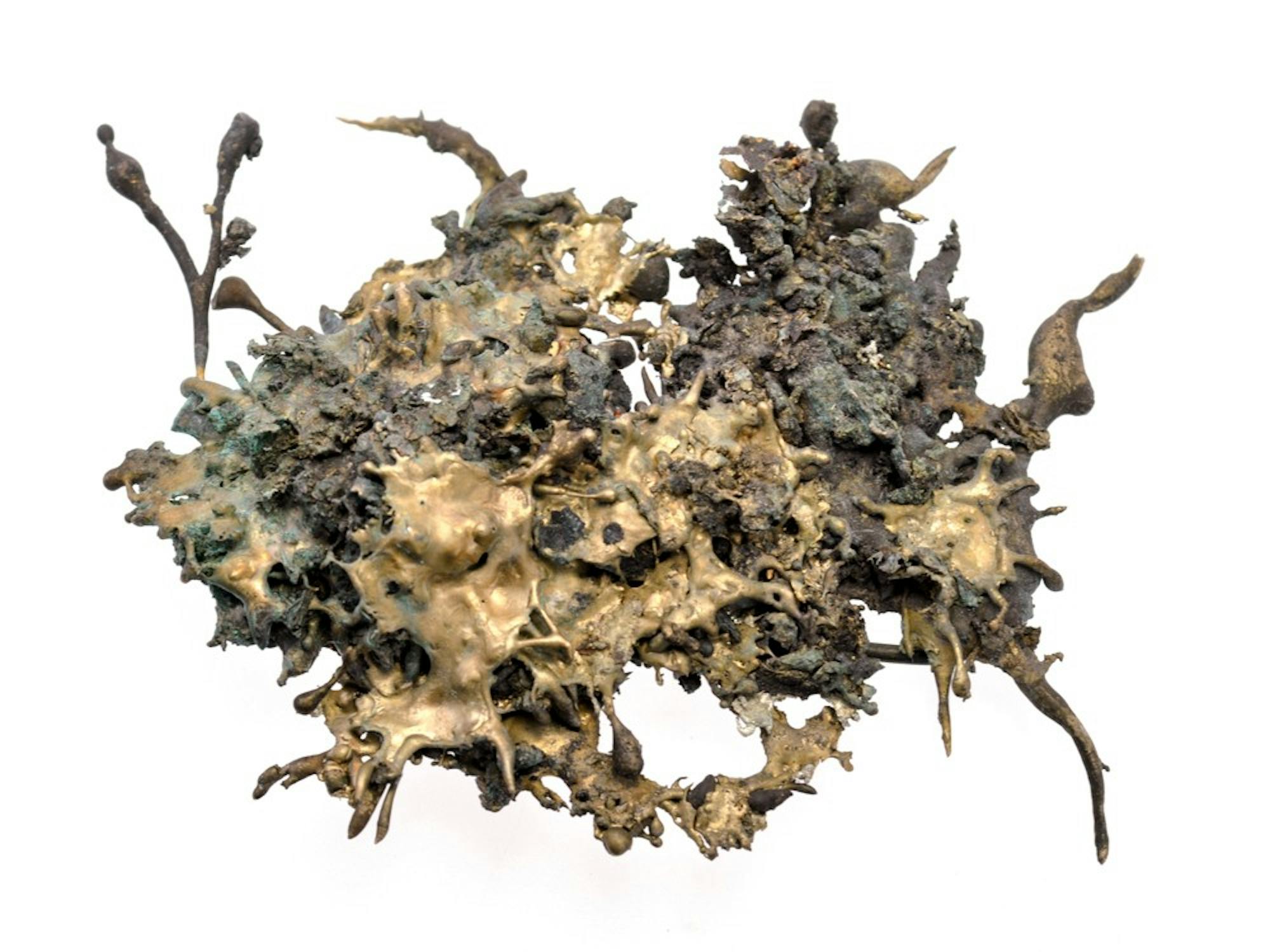You have probably seen a lot more of jewelry designer Matt Rabito ’18 than you think. An installation of his latest work is currently on display at the Hopkins Center for the Arts beside the staircase that leads to the Donald Claflin Jewelry Studio, a place that has molded Rabito’s Dartmouth experience.
Rabito’s relationship with the jewelry studio began his freshman year when he started making holiday gifts for his family and friends rather than purchasing them. His interest grew out of a long-standing appreciation of the arts and sculpture, and the realization that jewelry has a rich and nuanced history that often goes overlooked.
“A lot of artists that you [wouldn’t expect] — everyone from Salvador Dalí to Alexander Calder — either designed jewelry and had a professional goldsmith make it or actually made the jewelry themselves,” Rabito said.
The staff at the jewelry studio has also been a valuable resource for Rabito, especially in the past year. Although Rabito studies math and environmental science, he became interested in the past year in pursuing a graduate degree in jewelry design and metalsmithing. When he approached studio director Jeff Georgantes for guidance, the veteran jeweler was quick to take him under his wing.
“In the 1960s, there was this big movement to take jewelry out of the commercial world and push it into the fine arts, and Jeff was actually part of that west coast funk push,” Rabito said.
Over the course of the past year, Rabito and Georgantes have grown quite close, meeting weekly in a sort of extracurricular independent study. The meetings allowed Rabito to pitch ideas for new projects and ask technical questions. The past year has marked Rabito’s transition from a casual admirer to a deeply dedicated artist and one of the studio’s central student assistants.
“I don’t get the opportunity to work with Dartmouth students like that very often,” Georgantes said. “He came to every meeting with a PowerPoint presentation, with questions, with an agenda. It is such a great joy as a teacher to work with someone who is not only so engaged, but is also so well-prepared.”
That same attention to detail is a fixture of his career as an artist. Rabito sees beauty where others do not. He has been known to bring stones and other materials from his surroundings into the studio and incorporate them into new pieces. That resourcefulness also prompted him to reuse what most jewelers would consider useless — casting slag.
In the jewelry studio, designers often use a process called lost-wax casting to complete their pieces. The process involves pouring molten metal into a wax positive mold of the piece. During the process, the spilled metal cools, resulting in casting slag. The slag is usually discarded, but during one session in the workshop, the lava-like appearance of the molten metal caught Rabito’s eye, and he used it to fashion a pair of brooches. The disarming pieces are meant to be a comment on valuation in jewelry, but are also testaments to Rabito’s discerning creative eye.
Much like his mentor, Rabito continually tries to push jewelry into new contexts. The installation currently on display in the Hop features classic jewelry pieces designed with a utilitarian twist. Among those are a wearable cheese board, earrings embellished with screws and a ring attached to a fork. The ring was inspired by Rabito’s grandmother, who is unable to grasp utensils due to arthritis. The collection is a nod to jewelry’s functionality and an attempt to consider the value of jewelry as a tool instead of a symbol of wealth and status.
“Matt’s work is uncensored and unapologetic,” said Nelly Mendoza-Mendoza ’19, a close friend and fellow jewelry designer. “He doesn’t really ask for permission, which you can see in his pieces. If he likes an idea he just goes for it, which makes for really attractive material.”
Matt’s work is remarkable for its exploration of form. Rather than considering jewelry as a decorative form of body adornment, Rabito designs his pieces from a sculptural perspective. One of his most memorable pieces is a striking necklace that pushes the boundaries of what jewelry can be. The chain was fashioned from a [bicycle’s] inner tube and was paired with steel pendant weighing at about 20 pounds. Georgantes highlighted the piece as his personal favorite, stating that it was reflective of Matt’s desire to challenge norms of jewelry-making.
“Since last spring, he’s really evolved,” said KC Cheng ’17, another longtime friend of Rabito. “He really started to take initiative as an artist and be a lot more architectural and creative in his work, and it’s been so fun to watch his growth.”
Matt will be working in data science next year in New York City, where he plans to continue his designing. He will pursue a graduate degree in jewelry design and metalsmithing in the coming years. These days you can find him in the jewelry studio, once again working on personal gifts for friends. But this time, they’re for graduation.
“I want people to rethink how they relate to the things they wear, what they put on their bodies, and even how they do [so],” Rabito said. “Jewelry, in essence, is performative, so there is a lot of commentary that can be fed into wearing something weird.”




